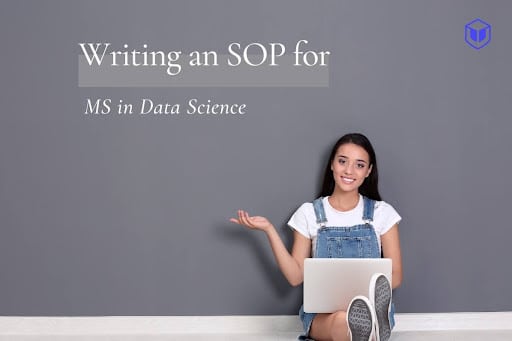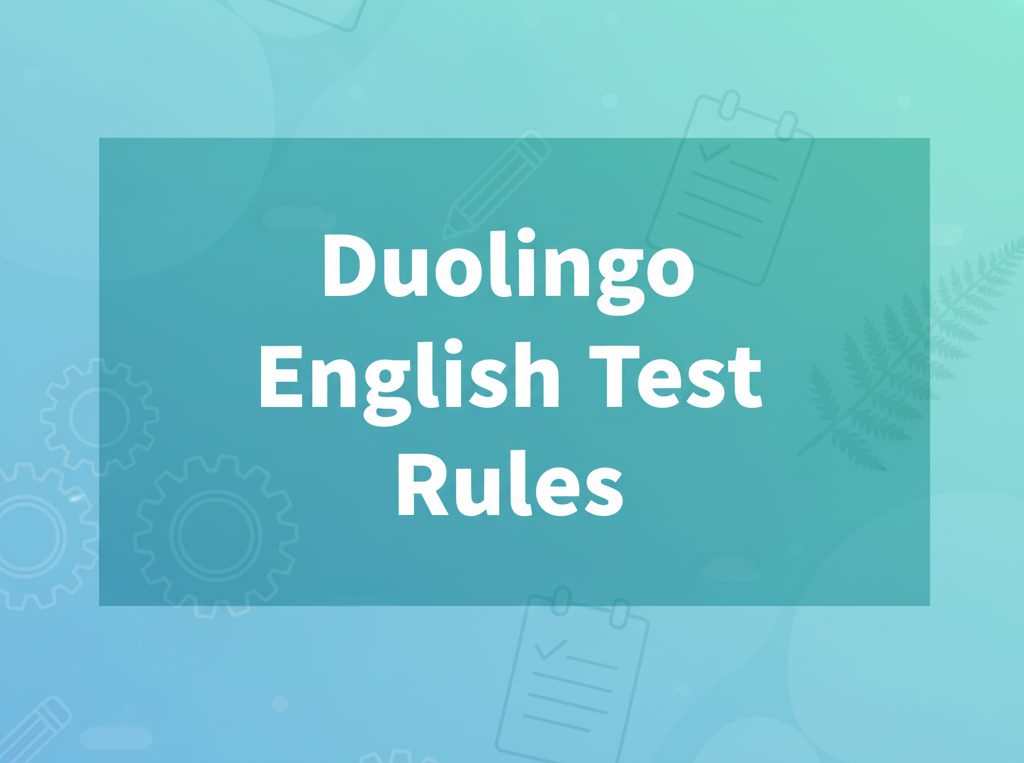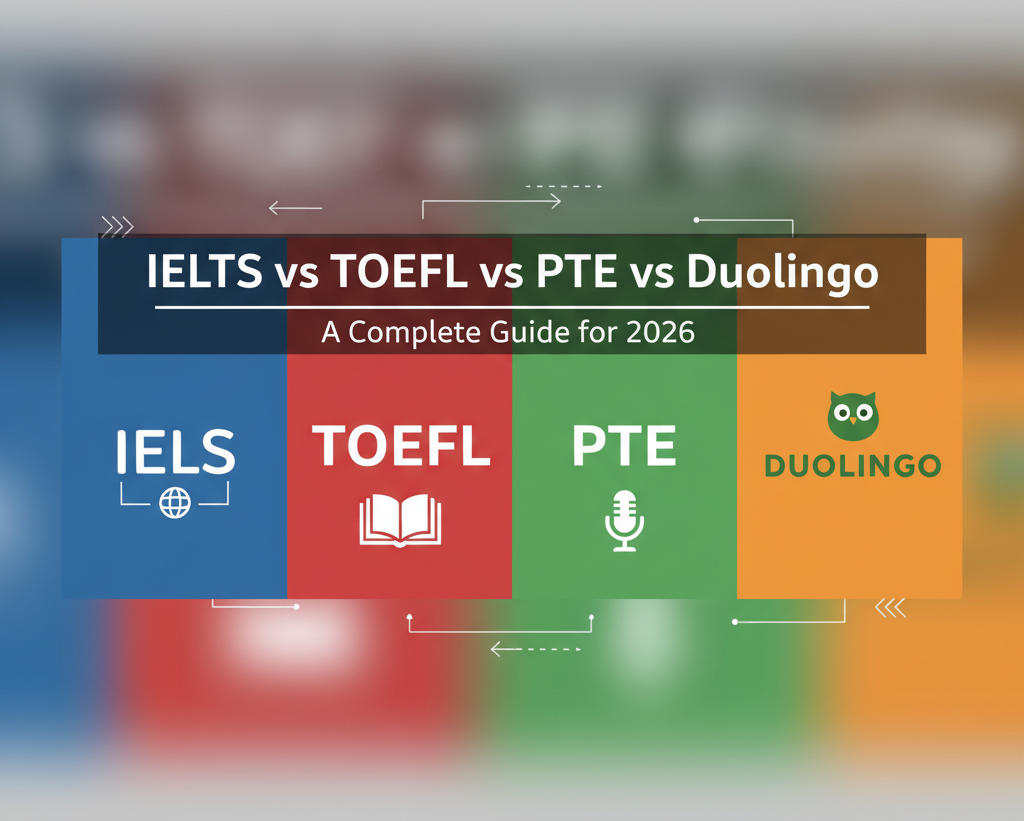If you’re passionate about data, statistics, and uncovering hidden patterns, a Master’s in Data Science might be your academic dream destination! However, one crucial step before you tackle those university applications is creating a standout SOP for an MS in Data Science.
A Statement of Purpose (SOP) is a personal essay required by many universities for admission to their graduate programs. It outlines your academic background, career goals, and reasons for applying to a specific program. The SOP is your chance to showcase your unique experiences, skills, motivations and why you’re the perfect fit for a Data Science program to the admissions committee.
Pro Tip: It’s a good idea to visit the university’s official website to confirm the specific format they require, as different institutions may have varying guidelines.
But why choose data science in the first place? The answer is straightforward. According to the Bureau of Labor Statistics, the demand for data science professionals is on a significant rise, with projections indicating that approximately 11.5 million job openings will be created globally by 2026.
With the explosive growth in data, businesses and organisations are seeking skilled professionals who can analyse vast datasets and derive actionable insights.
Choose your dream country
When do you want to study abroad?
What's your highest level of education?
Select you current city
How Leap will help you
Personalised University Shortlist
Express Applications with Quicker Admits
End-to-End Application Support
Now that you’re convinced you have a future in Data Science comes the main topic – how do you ensure your application stands out in this competitive field? Don’t worry. We have your back. Keep reading to learn how to make your application truly unforgettable!
Key Highlights
Creating a compelling SOP for a Master in Data Science requires outlining your ambitions and motivations clearly.
Here are the key aspects that have been covered in this blog.
| Aspect | Description |
| What is the Recommended Length of an SOP for MS in Data Science? | recommended length of 800 -1,200 words(1.5 to 2 pages) |
| Must-follow Format to Draft an SOP | Font Style: Professional font like Times New Roman Font Size: 12 Margins: 1-inch margins on all sides Line Spacing: 1.5 or double spacing Tone: Maintain a formal yet personal tone throughout Headers: Use clear headings for each section to improve readability |
| Is it Important to Write an SOP for Admission? | Yes.Statement of Purpose (SOP) is a mandatory requirement |
| What is the correct structure for an SOP? | Introduction Writing Academic Qualifications Work Experience Reasons for Studying Data Science Outlining short-term and long-term goals Conclusion |
What is Data Science?
Data science is an interdisciplinary field that focuses on extracting knowledge and insights from structured and unstructured data. It involves using a blend of tools, algorithms, and statistical methods to analyse and interpret data, aiming to uncover patterns, trends, and relationships that can inform decision-making.
You will be thrilled to know that, as per the facts presented by the BCG-WEF project report, 72% of manufacturing companies rely on advanced data analytics to enhance their productivity. What does this mean for you? You’ll be loaded with high-paying job offers from top companies when you have your Data Science degree in hand.
What is an SOP for an MS in Data Science?
An SOP, sometimes called a Letter of Motivation, is a crucial component of your application for an MS in Data Science. It’s essentially a personal essay that provides a window into your academic background, career goals, and motivations for choosing data science as your field of study.
A well-crafted Statement of Purpose is your golden ticket to standing out in your application for an MS in Data Science. It allows you to present your academic and professional backgrounds along with your future plans in a captivating way.
A well-crafted SOP is essential because of the following reasons.
- Demonstrates Your Passion: Your enthusiasm for data science should shine through, illustrating why you’re drawn to this field and what excites you about working with data.
- Highlights Relevant Experience: Whether you’ve worked on projects, internships, or relevant job roles, your SOP for MS in Data Science should detail these experiences and how they’ve prepared you for advanced study.
- Shows Your Goals: Clearly outline your career aspirations and how the program aligns with your short-term and long-term objectives.
By showcasing these qualities, your SOP will transform you from just a name on a page to a unique individual with a compelling story to share.
Also Read: SOP for MS in Computer Science: Sample & Example
How to Write an SOP for MS in Data Science?
Writing a strong Statement of Purpose (SOP) for an MS in Data Science is essential for gaining admission to top universities. To achieve this, you need to transition from an ambitious student to a strategic candidate with a clear vision.
Here’s your roadmap to success.

Self-Assessment
- Academic Strengths: Highlight significant achievements such as top grades, awards, and involvement in pertinent projects or research.
- Career Goals: Define your aspirations clearly, detailing the industry you aim to enter and how advanced education in data science will facilitate these goals.
- Motivation for Data Science: Discuss the academic rigour of data science education, reputable universities in your field, and the field’s emphasis on innovation and research.
Research
- Program Exploration: Understand the structure, curriculum, learning outcomes, and career paths offered by your chosen program.
- University Research: Select a university that aligns with your goals by investigating its reputation, faculty expertise, and distinctive attributes relevant to your academic ambitions.
- Educational Environment: Familiarise yourself with the education system of your target country, including its strengths, teaching methods, and assessment practices.
Structure, Format and Optimal Length Guidelines for an SOP for MS in Data Science
The Data Science Education Report states that the number of data scientists worldwide is expected to see a significant increase, with projections indicating a growth of over 20% in the next decade.
This growing interest in data science highlights just how valuable and full of opportunities a data science education can be. Imagine joining the ranks of a global community that's at the forefront of technological innovation, armed with the skills to tackle some of the world’s biggest challenges.
With a compelling SOP for MS in Data Science, you can set yourself on a path to not just participate but thrive in this exciting field.
Below is a recommended structure and format incorporating the latest best practices.
Structure of an SOP for MS in Data Science
An effective SOP should be well-organised and easy to follow. Here's a structured approach to guide you.
- Introduction
Begin with a compelling opening statement that highlights your passion for studying data science. Briefly mention your chosen course and university to set the tone for the rest of the SOP, clearly conveying your main goal from the outset.
Example: "I am thrilled to pursue a Master's in Data Science at the University of California, Berkeley, driven by my fascination with extracting insights from data and solving real-world issues. Berkeley's exceptional educational environment and renowned academic excellence make it the ideal setting to reach my career objectives."
- Academic Background
Share the story of your academic journey, emphasising key achievements and experiences that have prepared you for your chosen course. Include specific examples of projects, research, or coursework that showcase your competence and passion for the field.
Example: "While pursuing my undergraduate degree in Mechanical Engineering at MIT, I discovered my passion for renewable energy. For my senior thesis, I designed and built a prototype of a wind turbine optimised for urban environments. This project was well-received and solidified my determination to advance in the field of sustainable energy solutions.
- Work Experience
Provide an overview of your professional background, focusing on the roles, responsibilities, and skills that are relevant to your chosen field of study. This should show how your work experience ties into your academic aspirations.
Example: "For the past four years, I've worked as a business intelligence analyst at a (name the company). I've focused on data visualisation, statistical analysis, and problem-solving. A key project I led involved creating a predictive model for customer behaviour, which greatly enhanced our marketing efforts. This experience has deepened my interest in data science and inspired me to seek advanced education in this area."
- Motivation for Studying Data Science
Share why you decided to study data science. Talk about what specifically attracted you to the field, including its dynamic culture and the exciting opportunities it offers for solving real-world problems. Show that you've done your homework and have a genuine passion for data science, making it clear why this is the right path for you.
Example: "My decision to study data science stems from its incredible potential to transform industries and improve lives. I am particularly drawn to how universities in the United States, such as MIT, integrate cutting-edge research with practical applications.
The chance to work with renowned professors and access state-of-the-art resources is exciting. Additionally, the collaborative and inclusive environment in the U.S. will not only advance my academic knowledge but also enrich my personal development through diverse cultural experiences."
- Reason for Course and University Selection
Explain your reasons for choosing this specific course and university. Emphasise the unique features of the program and how well it aligns with your needs, interests, goals, and aspirations.
Example: "The Master's program in Data Science at MIT offers a unique focus on big data analytics, which aligns perfectly with my interests. The university's extensive network of industry partners will provide valuable internships and opportunities for collaborative projects."
- Long-Term Objectives
State your career aspirations for the future and explain how gaining this qualification from your chosen university will assist you in attaining these objectives. Be explicit about the positions you strive for and the contributions you want to make within your field of choice.
Example: "Once I complete my Master’s degree, I aspire to become a data scientist specialising in artificial intelligence. My ultimate goal is to develop innovative solutions to address environmental challenges. The comprehensive knowledge and global perspective I will gain from studying at MIT will be essential in achieving these ambitions.
- Conclusion
Recap your main points and reaffirm your commitment to your academic and professional goals. Close with an affirmative statement about your eagerness to tackle the obstacles of studying abroad.
Example: "I am confident that the thorough education and diverse experiences provided by the University of Toronto will lay a solid foundation for my future career. I look forward to the opportunity to both contribute to and learn from the dynamic academic community in Canada”.
Format of an SOP for Masters in Data Science
Proper formatting of your SOP is crucial in making a positive impression on the admissions committee. A well-formatted SOP reflects your attention to detail and professionalism and enhances readability, allowing your key points and personal narrative to stand out.
Here are the details.
- Length: Aim for 800-1200 words.
- Font: Use a professional font like Times New Roman or Arial, size 12.
- Spacing: Use 1.5 or double spacing.
- Structure: Use clear headings and subheadings to organise your content.
- Tone: Maintain a formal yet personal tone throughout.
- Margins: Set one-inch margins on all sides.
- Headers: Use clear headings for each section to improve readability
Also read: Statement of Purpose: Check SOP Format, Meaning & Sample for Visa 2024
The Dos and Don’ts of Writing SOP for MS in Data Science
Did you know that globally, the demand for data scientists could witness a whopping 200% rise by 2026? Well, you can also get added to this list by considering these points when writing your SOP for the MS in Data Science application.
The SOP serves as a testimonial in which you portray your academic journey, career ambitions, and objectives for studying data science.
Here are some important points to keep in mind.
| Do’s | Don'ts |
| Proofread meticulously for errors and typos. | Submit an unpolished SOP. |
| Review the SOP several times before submission. | Use of complex, extremely fancy language or slang. |
| Be honest in your academic and professional records; don't brag or fabricate stories. | Be disinterested or unenthusiastic. |
| Use your own words and cite sources appropriately. | Plagiarise content from other sources. |
| Maintain clear, concise, and professional writing. | Avoid writing a very long SOP. |
5 Mistakes to Avoid in SOP for MS in Data Science
Do you know? The average annual salary of a data science professional in the USA is between INR 50 lakhs and INR 90 lakhs.
Isn't that exciting? You could join this league, too—just avoid some common mistakes in your SOP and pave your way to success!
Here's how to avoid common mistakes:
- False Information: Always provide accurate documents like transcripts and certificates. Falsifying info can get your application rejected.
- Exceeding Word Limit: Stick to the word limit. Quality is more important than quantity.
- Lack of Research: Be specific about your goals. Don't include random details or vague reasons like the weather.
- Missing Financial Info: Explain how you'll cover your expenses. Mention scholarships or family support.
- Overselling Yourself: Be confident but humble. Avoid boasting.
Follow these tips to write a compelling SOP and reach your goals in data science.
Top 3 Tips for Crafting Your SOP for MS in Data Science
So, you have your eyes set on the prise – your dream college to study MS in data science? The only thing that stands in your way is a stellar SOP. Just so you are able to cross the threshold of your dream college, here are three great tips that will definitely set your SOP apart from the others. Have a look.
- Give Specific Examples
Instead of just stating your passion for data science, bring it to life with personal examples. Share a particular project or experience that ignited your interest in the field.
For instance, mention the time you developed a machine learning model that solved a real-world problem or an internship where you worked with big data. These specific examples make your claims more believable and relatable.
- Maintain Clarity
Make sure your SOP flows smoothly from one section to the next. Think of it as telling a story where each paragraph builds upon the previous one, creating a seamless and engaging narrative. This logical progression helps the reader understand your journey and how each step has led you to pursue an MS in Data Science.
- Give a Personal Touch
While it's important to maintain a professional tone, remember to let your personality shine through. Your unique voice can make your SOP memorable. Share your excitement, curiosity, and what drives you. This personal touch will make your SOP stand out and give the admissions committee a glimpse of the person behind the application.
Examples of SOP for Master in Data Science
Once you understand how important a strong SOP is, make an outline, improve your writing, and then put it all together.
Take a look at these successful SOP examples – they can give you the perspective you need to turn good writing into a great story.

1. Engaging Introduction
"From the moment I encountered my first dataset in a high school statistics class, I was hooked. This early curiosity propelled me into a Bachelor's degree in Computer Science, where I immersed myself in a research project on the predictive capabilities of machine learning models.
With each discovery, my passion for data science grew, driving my ambition to pursue a Master's in Data Science at Stanford University. I am excited to deepen my expertise and drive groundbreaking solutions in this dynamic field."
Why It’s Effective:
- Immediate Engagement: The introduction grabs attention with a vivid memory, making it relatable and intriguing.
- Clear Progression: The narrative logically transitions from high school to undergraduate studies, showing a consistent interest in data science.
- Growing Passion: The applicant's enthusiasm for the field intensifies with each experience, making their dedication clear.
- Future Ambitions: The statement clearly articulates the desire to advance knowledge and contribute to innovative solutions, aligning with the goals of the Master's program.
- Personal Touch: The story is unique and personal, setting the candidate apart from others with similar academic backgrounds.
2. Cohesive Narrative
"My journey into data science began with a Computer Science degree, where I discovered my passion for transforming data into actionable insights. For my final year project, I created an AI-driven recommendation system for personalised education, which was recognised with the Dean's Award for Innovation.
This project not only showcased my technical skills but also ignited a deeper interest in using data science for social good. The MSc in Data Science at MIT, with its cutting-edge research facilities and expert faculty, is the perfect environment for me to pursue my goal of developing advanced data-driven solutions that can make a meaningful impact."
Why It’s Effective:
- Logical Progression: The narrative transitions smoothly from the candidate’s undergraduate studies to their significant project and future ambitions.
- Achievements: Specific achievements, like the Dean's Award for Innovation, underscore the candidate’s qualifications and innovation.
- Future Goals: The candidate clearly articulates how the program at MIT aligns with their research goals, emphasising a commitment to using data science for social good.
- Unique Focus: The emphasis on using data science for social impact adds a unique and compelling angle to the candidate’s story.
3. Specificity and Relevance
"At XYZ Corporation, I took the lead on a project to design a data visualisation tool that streamlined our analytics processes, cutting report generation time by 50%. This role sharpened my technical and leadership skills and sparked a keen interest in the practical applications of data science.
The University of California, Berkeley’s acclaimed Data Science program will enable me to further develop my expertise and apply innovative techniques to solve complex, real-world problems."
Why It’s Effective:
- Concrete Impact: The candidate provides a specific, quantifiable achievement, demonstrating the real-world impact of their work.
- Skill Development: The narrative clearly shows how the experience enhanced both technical and leadership skills.
- Evolving Interest: The candidate’s growing fascination with data science is evident, adding depth to their motivation.
- Program Fit: The statement highlights how Berkeley’s program aligns perfectly with the candidate’s goals, reinforcing the suitability of their application.
4. Polished Writing
"My fascination with data science was sparked during a visit to a tech startup, where I saw the transformative power of data-driven strategies in action. This experience led me to actively participate in local data science workshops and ultimately pursue a degree in Data Science.
The University of Toronto’s dynamic curriculum and state-of-the-art resources will provide the perfect platform to advance my skills and drive innovative, real-world solutions."
Why It’s Effective:
- Clear and Precise: The writing is straightforward and easy to follow, ensuring clarity.
- Grammar and Spelling: The text is free from grammatical errors, indicating meticulous proofreading.
- Interesting and Personalised: The narrative is engaging and personal, showcasing the candidate's enthusiasm and dedication to the field of data science.
Also read: MS in Data Science in the USA 2024: Best & Affordable Universities
Sample of SOP for Master in Data Science
Here is the detailed version of the sample of SOP for MS in Data Science.
I am excited to apply for the Master's program in Data Science at Oxford University. My fascination with data began during my undergraduate studies in Computer Science at Harvard University, where I discovered the power of transforming raw data into valuable insights.
During my time at Harvard University, courses in algorithms, statistics, and database management captured my interest. A standout project was developing a predictive model for customer behaviour. This project involved data cleaning, model building, and result interpretation, which not only honed my technical skills but also ignited my passion for data science.
Upon graduation, I joined Tech Corporation as a Data Analyst. Here, I had the opportunity to work on diverse projects involving data cleaning, visualisation, and modelling. Leading a project to optimise our supply chain operations was a significant achievement. By analysing historical data and developing predictive models, we reduced costs and improved efficiency. This hands-on experience demonstrated the real-world impact of data science and deepened my commitment to the field.
Oxford University's program stands out to me because of its strong emphasis on practical experience and cutting-edge research. I am eager to learn from distinguished faculty and collaborate with peers who share my enthusiasm for data science. The opportunity to work on real-world projects and access state-of-the-art resources is particularly exciting.
In addition to my academic and professional experiences, I have pursued online courses in machine learning and big data technologies to enhance my skills further. Continuous learning is crucial in this rapidly evolving field, and I am committed to staying updated with the latest advancements.
My ultimate goal is to become a data scientist who can make significant contributions to the field, particularly in healthcare and finance. I believe the MS in Data Science program at Oxford University will equip me with the knowledge, skills, and opportunities to achieve this goal.
Thank you for considering my application. I am eager to bring my passion for data science, my academic background, and my professional experience to Oxford University.
Sincerely,
[Your Name]
Conclusion
Creating an exceptional SOP for MS in Data Science is a critical milestone in your academic journey. This document serves as a mirror, reflecting your academic prowess, professional experience, and future career ambitions.
A successful SOP is authentic, detailed, and well-structured. Reflect on your experiences, thoroughly research your chosen university and program, and meticulously proofread your document.
Doing so will significantly boost your chances of securing a spot at a top university, bringing you closer to your academic and career goals.
Ready to take the next step? Visit Leap Scholar for more tips and personalised guidance on crafting your perfect SOP and achieving your study abroad dreams!
Frequently Asked Questions
-
Q. What is an SOP for MS in Data Science?
Ans. An SOP for MS in Data Science is a vital document that applicants submit as part of their university application. It serves as a narrative where students present their academic and professional background, explain their motivation for choosing data science as a study field, detail the specific course and university they have selected, and outline their long-term career goals.
-
Q. How to write an SOP for MS in Data Science?
Ans. To write an effective SOP for an MS in Data Science, you should follow the below structure:
Introduction: Capture your interest in studying data science.
Academic Background and Work Experience: Highlight your academic achievements and experiences and summarise any pertinent work experience.
Motivation for Choosing Data Science: Explain why you chose data science and detail aspects of the field and opportunities that attract you.
Course and University Selection: Specify why you selected your particular course and university.
Conclusion and Final Touch: Ensure your SOP is well-structured, clear, and free from grammatical errors. -
Q. What is the word limit for SOPs for MS in Data Science?
Ans. The word limit for an SOP for MS in Data Science typically ranges from 800 to 1000 words. This length allows applicants to provide a comprehensive yet concise overview of their academic and professional backgrounds, motivations for choosing data science, and future career aspirations.
-
Q. How do you introduce yourself in SOP for MS in Data Science?
Ans. To introduce yourself in an SOP for MS in Data Science, start with a compelling opening statement that captures your interest in studying data science. Briefly mention your chosen course and university.
Example: "I am eager to pursue a Master's in Data Science at Stanford University, driven by my passion for uncovering patterns in data and applying them to real-world problems."
-
Q. Which job has the highest salary in data science?
Ans. In data science, jobs such as data scientists, machine learning engineers, and AI specialists often offer the highest salaries. After graduating from these fields, professionals can earn between INR 49 lakhs to INR 1 crore per year, reflecting the high demand and significant earning potential for skilled experts in these industries.
-
Q What are some common mistakes to avoid when writing an SOP for M.S. in Data Science?
Ans. Common mistakes to avoid include:
Being too generic: Customise your SOP for each program, highlighting specific reasons for your interest.
Lack of focus: Ensure your SOP has a clear structure and flows logically from one section to the next.
Exceeding word limits: To ensure your SOP is concise and focused, stick to the recommended length of 800 -1,200 words.
Ignoring grammar and spelling errors: Proofread your SOP multiple times. -
Q. How should I address any gaps or weaknesses in my academic or professional history?
Ans. If you have any gaps or weaknesses in your academic or professional history, address them honestly and positively. Explain the circumstances that led to these gaps and what you learned from the experience. Emphasise how you've grown or improved since then.
For example, if you had a semester of poor grades, discuss any challenges you faced and how you overcame them. Showing resilience and the ability to learn from setbacks can turn potential weaknesses into strengths.
-
Q. What should be the primary focus of my SOP for MS in Data Science?
Ans. Your SOP should primarily focus on your academic background, professional experiences, and your motivation for pursuing an MS in Data Science. It would help if you articulated why you are interested in data science, how your past experiences have prepared you for this field, and what you hope to achieve in the future. Discussing specific projects or experiences that sparked your interest and showcasing your relevant skills and achievements can significantly strengthen your SOP.
-
Q. How do I conclude my SOP effectively?
Ans. Conclude your SOP by summarising your main points and reaffirming your enthusiasm for the program. Highlight how the MS in Data Science will help you achieve your career goals and how you can contribute to the program and university. End with a strong, positive statement that leaves a lasting impression on the admissions committee.
-
Q. Can I include personal challenges or obstacles in my SOP?
Ans. Yes, including personal challenges or obstacles can add depth to your SOP as long as they are relevant and highlight your resilience and growth. Discuss how you overcame these challenges and what you learned from them. For example, if you faced financial difficulties or had to balance work and studies, explaining how you managed these situations can show your determination and ability to handle adversity.
-
Q. Is it necessary to mention specific faculty members in my SOP?
Ans. Mentioning specific faculty members is not necessary but can be beneficial if their research aligns closely with your interests. Suppose you have identified professors whose work you admire and wish to collaborate with. In that case, mentioning them can show that you have researched the program and are genuinely interested in contributing to their research efforts. Just ensure that you accurately reflect their work and how it connects with your goals.















Have Questions? Get Guidance to reach your Dream University
Connect with India's finest counsellors and biggest study abroad community.
Get Guidance